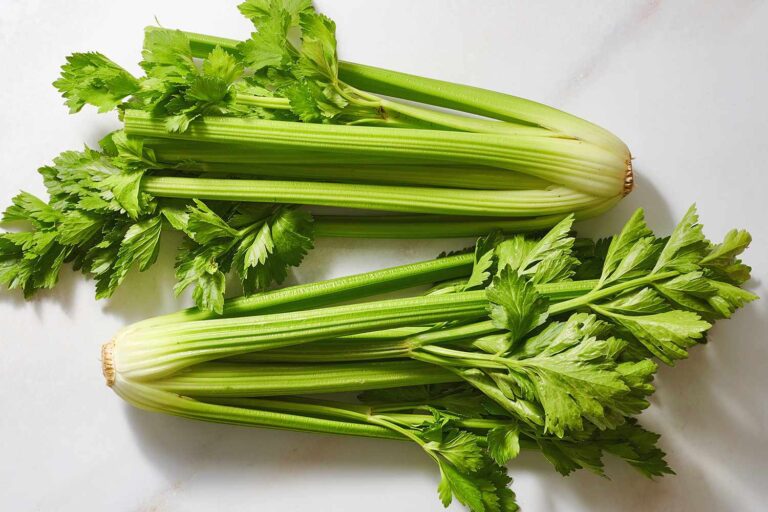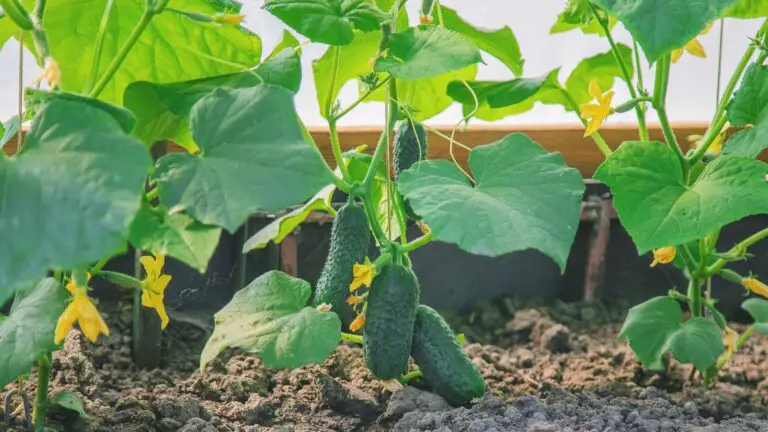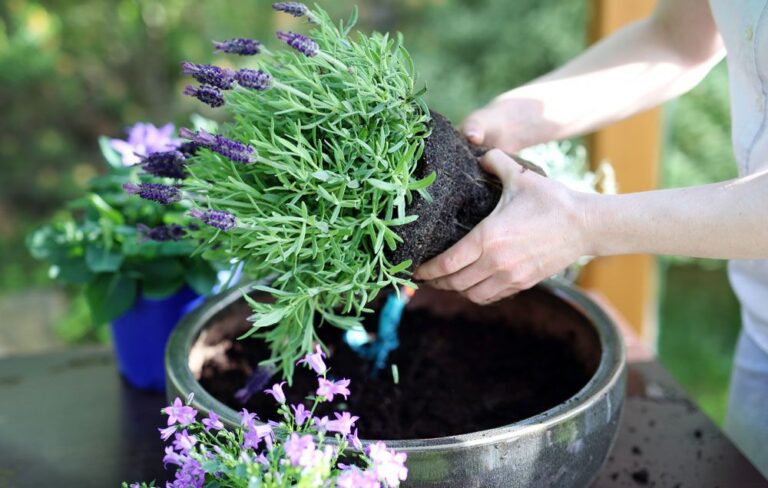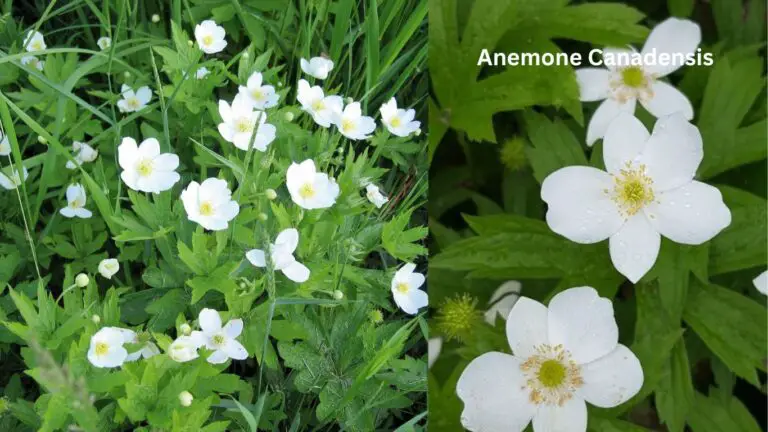Drying and Curing: How to Preserve and Improve the Quality of Your Buds
Table of Contents
Understanding the Importance of Proper Drying and Curing Techniques
Proper drying and curing techniques are crucial steps in the cultivation process of cannabis buds. These techniques determine the overall quality, potency, and flavor profile of the final product. By understanding the importance of these processes, gardeners can ensure that their hard work in growing cannabis is not wasted.
During the drying phase, moisture is carefully removed from the buds to prevent the growth of harmful bacteria and mold. This step also allows for the preservation of cannabinoids and terpenes, which are responsible for the therapeutic and aromatic properties of the plant. Curing, on the other hand, involves aging the dried buds in a controlled environment with optimal temperature and humidity levels. This process enhances the flavors and smoothness of the buds while further developing their therapeutic properties. The time and effort invested in proper drying and curing ultimately translate into a more enjoyable and valuable cannabis experience.
The Science Behind Drying and Curing Cannabis Buds
Drying and curing cannabis buds is not just a simple task of hanging them up and waiting for them to dry. It is a scientific process that requires careful attention to detail in order to achieve optimal results. The science behind drying and curing cannabis buds lies in the chemical reactions that take place within the plant as it dries.
During the drying process, moisture is gradually removed from the buds, resulting in a slower degradation of cannabinoids and other desirable compounds. This process allows the buds to retain their potency, flavor, and aroma. Additionally, proper drying techniques play a crucial role in preventing the growth of mold and mildew, which can compromise the quality and safety of the final product. The curing process, on the other hand, involves the preservation and enhancement of the bud’s flavor and aroma through the oxidation and breakdown of chlorophyll and other unwanted compounds. By understanding the science behind drying and curing, cultivators can ensure that their cannabis buds reach their full potential in terms of potency, flavor, and overall quality.
Selecting the Ideal Environment for Drying and Curing
When it comes to drying and curing cannabis buds, selecting the ideal environment is crucial for achieving the highest quality end product. The environment plays a significant role in the preservation of aroma, potency, and overall quality. It is essential to create a space that provides the optimal conditions for drying and curing, ensuring that the buds retain their desired characteristics.
| Aspect | Description |
|---|---|
| Temperature Control | Control the temperature in the drying area; the ideal range for drying cannabis buds is 60 to 70°F (15 to 21°C). |
| Humidity Management | Maintain humidity levels between 45% to 55% to preserve flavor and aroma while preventing mold or mildew growth. |
| Airflow during Drying and Curing | Ensure proper airflow through ventilation to prevent moisture accumulation and promote uniform drying. |
| Use of Oscillating or Exhaust Fans | Employ oscillating fans or exhaust fans to maintain a constant flow of fresh air, reducing the risk of mold or pests. |
| Foundation for High-Quality Buds | Creating the ideal environment sets the foundation for producing high-quality cannabis buds. |
Following these guidelines for temperature, humidity, and airflow control is crucial during the drying and curing process, contributing to the production of high-quality cannabis buds with preserved aroma, potency, and overall quality.
Step-by-Step Guide to Harvesting and Trimming Your Buds
Harvesting and trimming your buds is a crucial step in the cannabis cultivation process, as it can greatly impact the quality and potency of your final product. To ensure you achieve the best results, follow this step-by-step guide to harvesting and trimming your buds.
Step 1: Determine the right time to harvest
Timing is everything when it comes to harvesting your cannabis plants. Keep a close eye on the trichomes, the tiny resin glands on the buds, using a magnifying glass or macro lens. Harvest when the trichomes are mostly cloudy with a few amber ones for a more cerebral and uplifting effect. If you prefer a heavier body high, wait until the trichomes become mostly amber.
Step 2: Prepare your tools and workspace
Before you start harvesting, make sure you have all the necessary tools on hand. This includes a pair of sharp pruning shears or scissors, gloves, and a clean and sanitized workspace. This will help prevent any contamination and ensure a smooth and efficient trimming process.
Now that you have harvested your buds, it’s time to move on to the trimming stage. Stay tuned for the next step in our guide, where we will walk you through the process of trimming your buds to perfection. With proper harvesting and trimming techniques, you’ll be well on your way to enjoying top-notch cannabis that is bursting with flavor and potency.

The Role of Temperature and Humidity in the Drying Process
Proper temperature and humidity levels play a crucial role in the drying process of cannabis buds. Maintaining the right conditions is essential in order to produce high-quality, flavorful, and potent buds.
Temperature control is key during the drying phase. It is recommended to keep the drying area at a temperature of around 60-70°F (15-21°C). This temperature range ensures a slow and controlled drying process, which allows for the preservation of the plant’s terpenes and cannabinoids. If the temperature is too high, it may result in the loss of these valuable compounds, leading to a less desirable final product. On the other hand, if the temperature is too low, the drying process may take longer, increasing the risk of mold and mildew development.
Humidity levels are equally important in ensuring a successful drying process. The ideal humidity range for drying cannabis buds is around 45-55%. This level of humidity helps to prevent the buds from drying too quickly, which can result in a harsh and unpleasant taste. Additionally, maintaining proper humidity levels helps to prevent the growth of mold and mildew, which can significantly damage the quality and potency of the buds. Using a humidifier or dehumidifier can be beneficial in regulating the humidity levels and creating an optimal drying environment.
Achieving the right balance of temperature and humidity is crucial for a successful drying process. By following these guidelines, growers can maximize the flavor, potency, and overall quality of their dried buds. It’s important to remember that different strains may have slightly different drying requirements, so it’s always recommended to consult strain-specific resources or seek advice from experienced growers to obtain the best results.
How to Achieve an Optimal Drying Time for Your Buds
Properly drying and curing your cannabis buds is essential to unlock their full potential in terms of flavor, aroma, and potency. Achieving an optimal drying time is a crucial step in this process. It is important to strike a balance between drying your buds too quickly, which can result in harsh and unpleasant smoke, and drying them too slowly, which can lead to mold or other microbial issues. So, how can you achieve the ideal drying time for your buds?
First and foremost, it is crucial to properly trim your buds before the drying process begins. Trimming removes excess leaves and helps the buds dry evenly, promoting a consistent drying time. Additionally, it is advisable to hang the trimmed buds upside down in a dark, well-ventilated room. This allows for proper airflow, helping to prevent the formation of mold or mildew.
Setting the right temperature and humidity levels is also key to achieving an optimal drying time. Generally, a temperature of around 60-70°F (15-21°C) with a humidity level of 45-55% is recommended. However, it is worth noting that these values might vary depending on the specific strain and environmental conditions. Monitoring the temperature and humidity throughout the drying process using a hygrometer can help you fine-tune these factors and ensure an ideal drying time.
Remember, patience is vital when it comes to drying your buds. Rushing the process may result in a subpar final product, lacking in flavor and potency. On the other hand, excessive drying time can cause valuable cannabinoids and terpenes to degrade. By following these guidelines and paying attention to the environmental factors, you can achieve an optimal drying time for your buds, providing you with an exceptional end product that you can be proud of.

Exploring Different Drying Methods and Their Pros and Cons
There are several different methods that can be used to dry cannabis buds, each with their own pros and cons. One commonly used method is air drying, which involves hanging the buds upside down in a well-ventilated area. The main advantage of this method is its simplicity and affordability. However, it can take a longer time for the buds to dry completely, and there is a risk of mold or mildew forming if the humidity is too high. Another option is using a drying rack or screen, which allows for more airflow around the buds. This method can help to speed up the drying process, but it may not be as effective for larger quantities of buds. A third method is using a dehumidifier or fan to regulate the humidity and airflow in the drying area. This can help to ensure a more controlled and consistent drying process, but it can also be more costly and require more equipment.
| Drying Method | Description | Pros | Cons |
|---|---|---|---|
| Hang Drying | Buds are hung upside down to dry in a controlled environment. This method is traditional and widely used. | – Simple and cost-effective. – Promotes slow and even drying. – Allows for the development of desired flavors and aromas. | – Takes a longer time compared to some other methods. – Requires adequate space and careful handling to avoid damage to buds. – The risk of mold is higher if humidity levels are not controlled. |
| Screen Drying | Buds are laid out on screens or trays to dry. This method provides good airflow and is suitable for small-scale drying. | – Good airflow, promoting uniform drying. – Suitable for small quantities. – Can be combined with other drying methods. | – Requires careful monitoring to avoid uneven drying. – May take longer than methods with higher airflow. – Limited capacity for larger harvests. |
| Bud Washing | Buds are briefly submerged in a water and hydrogen peroxide solution before drying. This method aims to remove contaminants and enhance appearance. | – Removes potential contaminants from the surface of buds. – Improves the visual appearance of buds. | – Requires careful handling to avoid damaging delicate trichomes. – May alter the flavor and aroma profile. – Some argue that it may strip away beneficial compounds. |
| Quick Dry Methods | Techniques such as using a microwave or oven for accelerated drying. These methods are not commonly recommended but are mentioned for awareness. | – Can be faster than traditional methods. – Useful in emergencies or for small quantities. | – Risks degrading the quality of buds, affecting taste and potency. – Increased likelihood of uneven drying. – Potential loss of terpenes and cannabinoids. |
| Freeze Drying | Buds are frozen and then dehydrated in a vacuum, preserving terpenes and cannabinoids. This method is more advanced and requires specialized equipment. | – Preserves the aroma, flavor, and potency of buds. – Faster than traditional methods. – Suitable for large quantities. | – Requires specialized equipment and can be expensive. – Not widely accessible for home growers. – May not be necessary for all cannabis varieties. |
| Drying Racks or Nets | Buds are placed on racks or nets to dry. This method provides good airflow and is versatile for various scales of drying. | – Efficient airflow, promoting uniform drying. – Suitable for various quantities. – Versatile and adaptable. | – Space requirements may increase with larger harvests. – Requires careful handling to avoid damage. – Monitoring is crucial to prevent mold growth. |
Common Mistakes to Avoid During the Drying and Curing Process
During the drying and curing process, there are several common mistakes that many growers make, often resulting in subpar cannabis buds. One of the most prevalent mistakes is drying buds too quickly. When buds are dried too fast, the outer layers dry out while the inner parts retain moisture, leading to an uneven drying process. This can result in a harsh taste, loss of potency, and increased risk of mold or mildew formation. To avoid this mistake, it is essential to ensure a slow and gradual drying process, allowing the moisture to evenly evaporate from the buds.
Another common mistake is improper humidity control during the drying and curing process. Humidity plays a crucial role in maintaining the quality and flavor profile of cannabis buds. If the humidity is too low, the buds can dry too quickly, leading to the loss of terpenes and flavors. On the other hand, if the humidity is too high, the buds may become susceptible to mold and mildew growth. It is important to monitor the humidity levels closely and make adjustments as needed to maintain an optimal range throughout the drying and curing process.
By being aware of these common mistakes and taking the necessary precautions, growers can ensure the production of high-quality cannabis buds with maximum potency and desirable flavors. Understanding the importance of proper drying and curing techniques is essential for every gardener and can significantly impact the overall quality of the final product.
Enhancing the Flavor Profile of Your Buds through Proper Curing
Proper curing is a crucial step in the post-harvest process that can greatly enhance the flavor profile of your cannabis buds. When done correctly, curing helps develop and preserve the natural terpene profiles, resulting in a more aromatic and flavorful end-product. During the curing process, the moisture content of the buds is gradually reduced, allowing them to reach an optimal humidity level for long-term storage. This slow drying process not only preserves the desired flavors, but it also helps to mellow any harsh or overly pungent notes, resulting in a smoother smoke or vapor experience.
One of the key factors in enhancing the flavor profile of your buds through proper curing is the control of humidity levels. Ideally, you want to maintain a relative humidity (RH) of around 55-65% during this stage. This allows the buds to gradually release excess moisture while retaining enough humidity to prevent them from drying out too quickly. Too high humidity can promote mold and mildew growth, while too low humidity can cause the buds to dry too quickly, leading to a harsher flavor. By monitoring and adjusting the humidity levels throughout the curing process, you can ensure the preservation of the delicate terpenes responsible for the unique flavors and aromas of your cannabis buds.
In the next section, we will delve deeper into the specific techniques and methods to achieve an optimal flavor profile through proper curing, including the ideal curing environment, temperature considerations, and the duration of the curing process. Stay tuned to discover how to bring out the full potential of your harvested cannabis buds.

The Benefits of Extended Curing for Maximum Potency and Smoothness
Extended curing is a crucial step in the drying and curing process of cannabis buds that can significantly enhance their potency and smoothness. When cannabis is harvested, it undergoes a drying phase to remove excess moisture. However, this initial drying phase is not enough to fully develop the desired flavors, aromas, and effects of the buds.
Extended curing involves allowing the dried buds to undergo a period of further maturation in controlled conditions. This extended curing process typically lasts for several weeks, during which the buds are stored in airtight containers, such as glass jars, at low temperatures and with controlled humidity levels. This allows for the gradual breakdown of chlorophyll and other compounds, resulting in a smoother smoke and a more potent and enjoyable cannabis experience. Additionally, extended curing helps to eliminate any residual moisture, which can prevent the growth of mold and other harmful microorganisms.
By taking the time to properly cure your cannabis buds, you can maximize the overall quality of your harvest. The extended curing process allows for the development of complex flavors and aromas, often described as earthy, fruity, spicy, or floral, depending on the strain. Moreover, the cannabinoids within the buds, such as THC and CBD, continue to develop and mature, ultimately leading to a more potent and effective product. Overall, extended curing not only enhances the sensory experience but also impacts the overall quality and effectiveness of your cannabis.
Tips for Storing and Preserving the Quality of Your Dried Buds
To ensure the long-term quality and potency of your dried buds, proper storage is essential. Here are some tips to help you store and preserve your dried buds effectively.
1. Use airtight containers: When it comes to storing dried buds, airtight containers are your best bet. Mason jars or glass containers with tight-fitting lids work well to keep out air and moisture, preventing mold growth and preserving the freshness of your buds.
2. Keep them in a cool, dark place: Light and heat can degrade the quality of your buds by breaking down the cannabinoids and terpenes. Find a cool, dark spot in your home, such as a cupboard or a closet, and store your jars there. This will help maintain the potency and flavor of your buds for longer periods.
Remember, improper storage can lead to the loss of potency, flavor, and overall quality of your dried buds. Implement these tips to ensure that your hard-earned harvest stays fresh and enjoyable for months to come.

Troubleshooting Common Issues in the Drying and Curing Process
When it comes to the drying and curing process of cannabis buds, there can be a few common issues that arise. Understanding how to troubleshoot these issues is essential for ensuring the quality and potency of your final product.
One common issue that growers may face is mold development during the drying process. Mold can not only ruin your harvest, but it can also pose health risks if consumed. To prevent mold, it is crucial to maintain proper humidity levels and ensure good airflow in the drying room. Additionally, inspecting each bud carefully before drying can help identify any signs of mold early on and prevent its spread.
Another issue that may arise is over-drying or under-drying of the buds. Over-dried buds can become brittle and harsh, while under-dried buds can retain moisture and become susceptible to mold or mildew. To avoid these problems, it is important to monitor the drying process closely and use a hydrometer to measure the humidity levels accurately. Maintaining a relative humidity of around 50% and checking for consistent moisture content in the buds can help achieve an optimal drying result.
By identifying and addressing these common issues during the drying and curing process, you can ensure a high-quality final product that is both potent and flavorful.
Expert Insights: Advice from Experienced Growers on Drying and Curing Success
Expert Insights: Advice from Experienced Growers on Drying and Curing Success
As experienced growers in the field of cannabis cultivation, we understand the significance of proper drying and curing techniques in achieving the desired quality and potency of your buds. One crucial piece of advice we can offer is to be patient throughout the process. Rushing the drying or curing phase can result in inferior buds that lack flavor and potency.
One grower shared, “I used to be very eager to harvest my buds once they seemed ready, but I quickly learned that patience is key. Allowing the buds to dry and cure at their own pace enhances the flavors, aromas, and overall quality. It’s worth the wait, trust me.” So, when determining if your plants are ready for drying, it’s important to consider factors like trichome development, bud structure, and aroma. By giving your plants the time they need to properly dry and cure, you’ll be rewarded with top-notch buds that meet your expectations.
The below video is only available on YouTube, as the video is age restricted. Please follow the link to watch and know more about Drying and Curing.
What is the ideal temperature for drying cannabis buds?
The ideal temperature for drying cannabis buds is around 60-70°F (15-21°C). This temperature range allows for a slow and controlled drying process, preserving the potency and flavor of the buds.
How long does the drying process typically take?
The drying process typically takes around 7-10 days. However, the exact drying time can vary depending on factors such as humidity levels, bud density, and the drying method used.
Can I speed up the drying process by increasing the temperature?
It is not recommended to increase the temperature to speed up the drying process. Higher temperatures can cause the buds to dry too quickly, leading to a harsh taste and decreased potency.
What are the different drying methods available?
Some common drying methods include hang drying, screen drying, and using drying racks or trays. Each method has its own pros and cons, and the choice depends on personal preference and available space.
How can I enhance the flavor profile of my dried buds?
Proper curing is key to enhancing the flavor profile of dried buds. This involves storing the buds in airtight containers and allowing them to cure for a few weeks. Burping the containers regularly during the curing process helps release excess moisture and improve the flavor.
Is it necessary to cure the buds for an extended period of time?
While it is not necessary, curing the buds for an extended period of time, typically 4-8 weeks, can greatly enhance the potency and smoothness of the final product. Extended curing allows for further development of flavors and aromas.
How should I store my dried buds to preserve their quality?
To preserve the quality of dried buds, store them in airtight containers, such as glass jars, in a cool and dark place. Avoid exposure to light, heat, and moisture, as these can degrade the buds over time.
What are some common issues that can arise during the drying and curing process?
Some common issues include mold development due to high humidity, overdrying of the buds, and improper airflow. It is important to monitor the drying environment closely and make adjustments as needed.
Can I use a dehumidifier to control humidity levels during drying?
Yes, a dehumidifier can be used to control humidity levels during drying. However, it is important to ensure that the humidity does not drop too low, as this can cause the buds to dry too quickly.
How can I troubleshoot a problem if my buds are drying too slowly?
If your buds are drying too slowly, you can try increasing the airflow in the drying area, reducing the humidity levels, or adjusting the temperature slightly. Additionally, ensure that the buds are not too close together, as this can impede airflow.

Beck Wakeford is a dedicated writer at SouthElMonteHydroponics, with a fervent enthusiasm for agriculture and technological innovation. Armed with a degree in Agricultural Engineering from a leading university, Beck specializes in hydroponic systems design, automation, and optimization. Their passion for merging traditional farming with cutting-edge technology drives them to explore novel solutions for sustainable food production. Beck’s expertise and keen interest in the intersection of engineering and agriculture make them a valuable asset in the quest for efficient and eco-friendly farming practices. Through their writing, Beck aims to inspire others to embrace the potential of hydroponics in shaping a more sustainable future.






